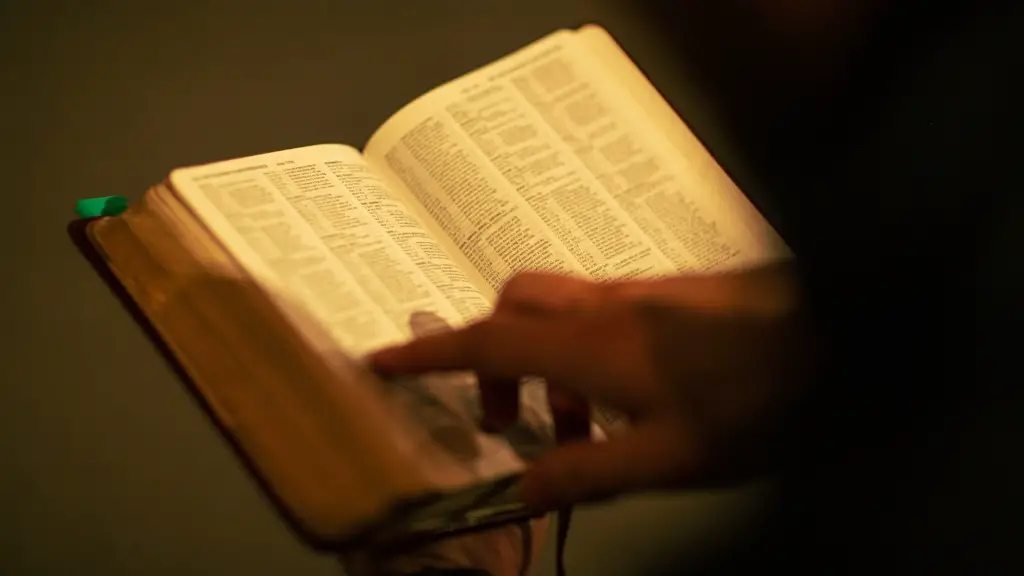Mary Magdalene in the Bible
Mary Magdalene, also known simply as Mary, is the most studied subject in the Bible. She is described primarily in the New Testament Gospels, especially those written by Mark and John, as one of Jesus’ most devoted followers. She is identified as a woman from whom seven demons had been exorcised. Beyond this, the exact details about her life are scant.
In John 12:1-8 and Mark 14:3, Mary is recorded as bringing an alabaster box of ointment to anoint Jesus. She is also present at the crucifixion of Jesus and among the first people to find the empty tomb. Other appearances of Mary in the Bible include the empty tomb accounts in John 19, 20, and when Jesus appears at the Sea of Tiberias in John 21.
Mary Magdalene has been interpreted in a variety of ways over the centuries and it is likely that she is a composite figure gradually assembled from several different women. In traditional Catholic theology, she is often seen as both a repentant sinner and witness to Jesus’ resurrection. In the Eastern church, she is sometimes seen as Jesus’ devoted disciple, as well as an example of love and devotion to Jesus.
An important medieval source for understanding Mary Magdalene is The Golden Legend, which was written about 1260. It recounts many fantastic stories about her and her possible connections to various biblical figures, such as Martha and Lazarus. This source has often been used as a basis for other understandings of Mary. However, it should be noted that much of the content of The Golden Legend is legendary and not found in the Bible.
In modern popular culture, Mary Magdalene is often depicted as a reformed prostitute and a teacher of wisdom. This portrayal has its origins in the Gnostic Gospels known as the Gospel of Philip, which depicts her as a companion of Jesus who was closest to him. In the Gospel of Mary, Mary is portrayed as a visionary, a prophetess, and the leader of Jesus’ disciples.
However, it should be noted that none of this information is found in the Bible and there is no evidence that Mary Magdalene was a prostitute. Unfortunately, this false association has caused her role within Christianity to become distorted in the popular imagination.
The identification of Mary as a prostitute is only one of many theories. While it makes a compelling narrative, it is also one that does not align with the Bible. While the Bible does not provide many details about Mary, it does reveal that she was devoted to Jesus and an important witness to his death, burial, and resurrection.
Role of Mary Magdalene in the Church
Mary Magdalene has been a powerful figure in the Christian tradition for centuries. She is seen as a model of devoted love and of the power of faith. She is a patron saint of repentant sinners, converts, and the sick. Her veneration dates back to at least the fourth century, when she was celebrated as the “Apostle of the Apostles.” Mary is one of the most-revered saints in the Catholic, Eastern Orthodox, Anglican and Lutheran Churches.
In 1969, she was declared a “patron saint” of the Catholic Church and her liturgical feast day is celebrated every year on July 22. Her cult continues to grow and many Christian churches have dedicated chapels to her.
In 2016, Pope Francis issued a document, “Mulieris Dignitatem,” which stated that Mary Magdalene was “the apostle of the apostles” and that “her example represents a figure of extraordinary value for all Christian women.” This document affirmed the Church’s long-held understanding of Mary Magdalene’s importance to the Church and the Christian life.
Beyond the Church, Mary Magdalene continues to inspire many people in their search for spiritual truth. Theologians, historians, and scholars continue to debate her identity and meaning in Christianity. But regardless of how she is seen, Mary Magdalene stands as a powerful figure of faith, a model of devoted service to Jesus, and a testament to the power of love.
The Bible’s View
The Bible mentions Mary Magdalene in several places, primarily in the 4 Gospels. She is most prominently mentioned in the narratives of Jesus’ crucifixion and resurrection. In all 4 gospels, Mary is the first person to see Jesus after his resurrection. She is also one of the few women named in the New Testament. These facts indicate that the authors must have considered her an important figure.
The New Testament does not give much information about Mary and what it does provide is vague. For example, she is said to have had seven demons and is also described as one of Jesus’ closest followers. It is likely that her personality is a composite of several female figures and not one individual woman.
Some Bible scholars view Mary in a negative light due to her association with demons. Others see her as a model of Christian faith and virtue. Her actual identity and character may never be known, but she remains an important figure in Christianity.
In the end, it is not important to know the exact details of her life. What matters is that she remained a faithful follower to Jesus even in the face of death. Her example of dedication and loyalty should be an inspiration to all who seek to follow Jesus.
The Role of Mary in the Atonement
As one of the first individuals to encounter the resurrected Jesus, Mary plays a crucial role in Christianity. Her witness to Jesus’ resurrection serves as the foundation for the Christian faith, as it is written: “If Christ has not been raised, then our preaching is in vain and your faith is in vain” (1 Corinthians 15:14).
Without Mary’s witness, the Christian belief in the atonement would not have been possible. It is only because of her faithfulness and abiding love for Jesus that the Church exists today. Therefore, Mary’s role in the atonement should not be diminished and should be deeply respected.
Moreover, Mary’s role in the atonement reveals something important about Jesus. By appearing to Mary first and entrusting her with the news of the resurrection, Jesus showed that he honored women. In a world that often devalued them, Jesus showed that women were worthy of trust and love.
Finally, Mary’s witness to the resurrection serves as a reminder of the power of faith. In spite of the evidence to the contrary, Mary believed that Jesus had risen from the dead. This faith gave her the strength and courage to endure difficult times and to remain loyal to Jesus.
Legacy of Mary Magdalene
Mary Magdalene’s legacy can be felt in innumerable ways in the Christian tradition. Her witness to the resurrection and her devotion to Jesus have served as an example of faithfulness and dedication. Churches have dedicated chapels and named days of service in honor of her example.
Mary’s fame has spread beyond Christian churches to the world at large. There are countless books, films, and other media that explore her life and legacy. Although the exact details of Mary’s life may never be known, her passion and faith serve as an inspiration to people all over the world.
Furthermore, Mary’s legacy serves to remind us all of the love and devotion we should have for Jesus. Her example of courage and faithfulness should be an encouragement to every Christian. As we seek to follow him, may we also strive to emulate the courage and faith of Mary Magdalene.
Reverence for Mary Magdalene
Today, a variety of people, from Catholics to Pagans, observe holidays in honor of Mary Magdalene. Her legacy and legacy is celebrated each year on July 22, the international day dedicated to her. People around the world celebrate her feast day with special services in her honor and many pilgrimage to sites associated with her life.
The devotion to Mary has also continued online. Mary websites, blogs and online forums have sprouted up in honor of her. These platforms serve as sacred spaces to discuss her legacy, as well as to promote her love and devotion to Jesus.
At the same time, Mary Magdalene has been the subject of much debate and contention. Many points of view have been expressed regarding her importance, nature, and status in Catholic and Christian traditions. Despite this, Mary’s popularity and veneration remain strong.
No matter what one’s view is of Mary Magdalene, her story is remarkable and inspiring. Her example of courage and devotion to Jesus shines brightly in an increasingly skeptical and secular world. The legacy of Mary Magdalene will surely remain an inspiration for generations to come.
Mary Magdalene and Feminist Perspectives
The legacy of Mary Magdalene has been rediscovered by many contemporary feminists who have sought to reclaim her legacy from misappropriations and distortions. They have sought to revise the traditional narratives of Mary and to celebrate her as a powerful woman, a leader of Jesus’ disciples, and a spiritual teacher.
These perspectives view Mary as a powerful symbol for today’s women. They point to the fact that she was one of the few women named in the Gospels and that she was the first one to see the resurrected Jesus. These feminists also emphasize that she was the first to preach the good news of Jesus’ resurrection, thus demonstrating that she was an independent, spirited woman.
From a feminist perspective, Mary Magdalene is seen as a symbol of strength and courage for women. She is an example of what can be accomplished when women are given a voice and encouraged to exercise leadership. Mary is a reminder to us today of the importance of respecting and celebrating women and allowing them to be equal leaders in society.
For those seeking a more spiritual interpretation, Mary Magdalene is a powerful symbol of faith, love, and devotion. She represents a divine experience of profound devotion to Christ, an embodiment of true love, and a witness to the power of faith. Her faithfulness is a reminder to all that anything is possible when one is armed with love and courage.





